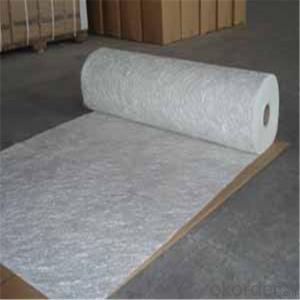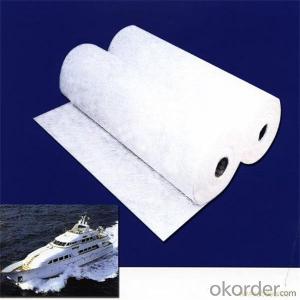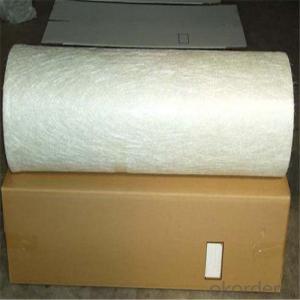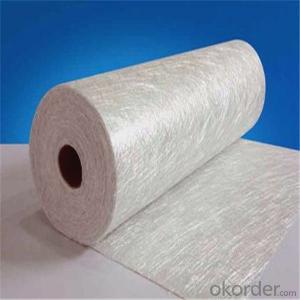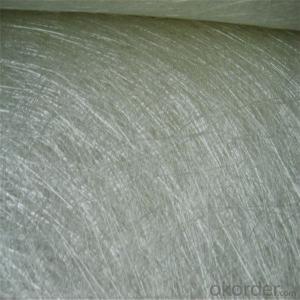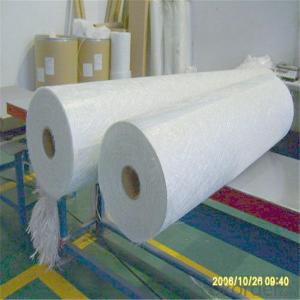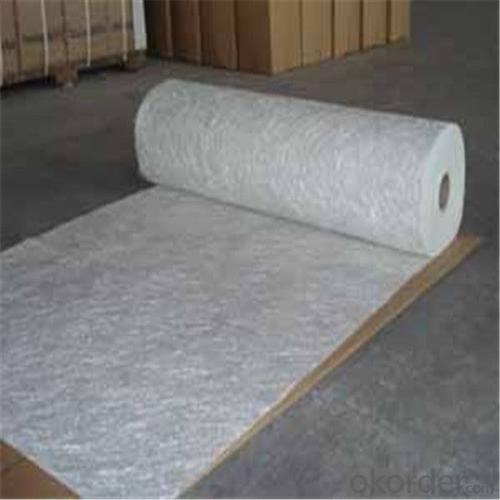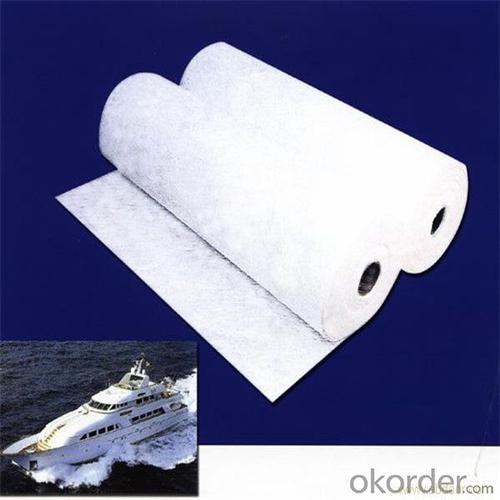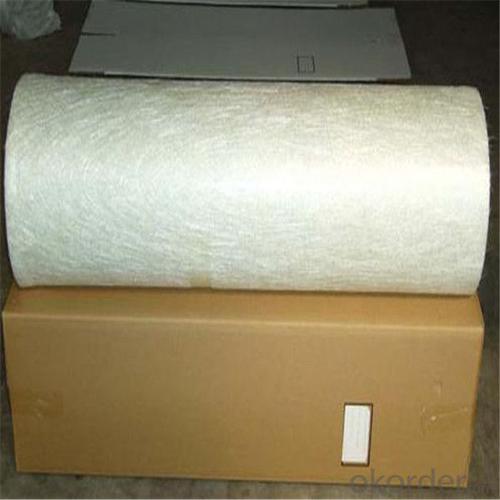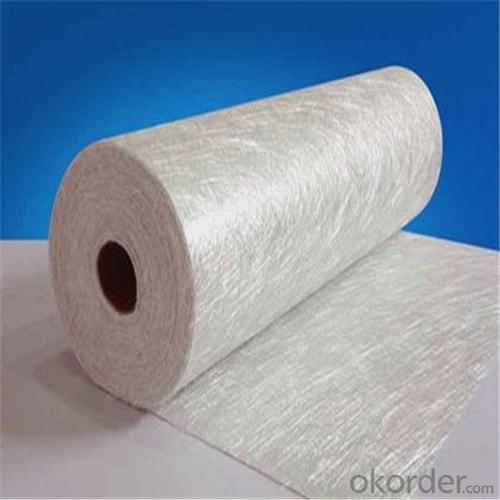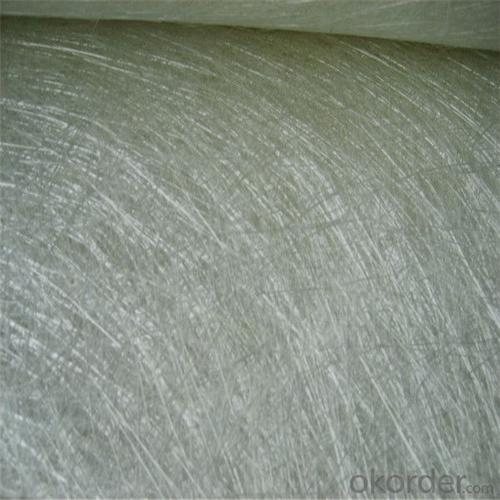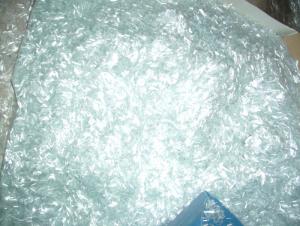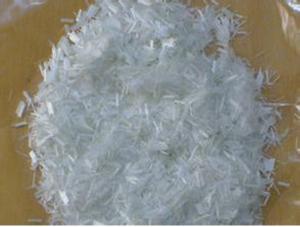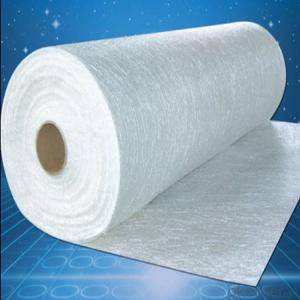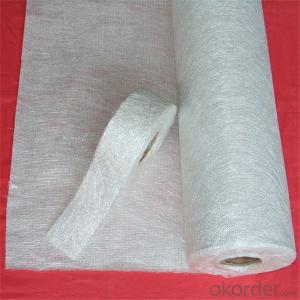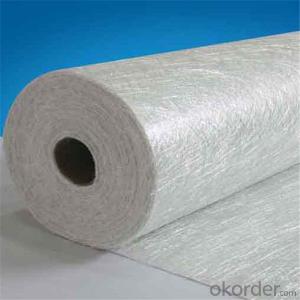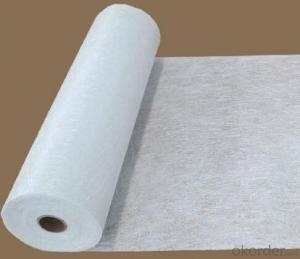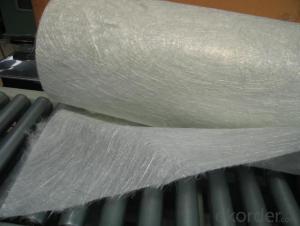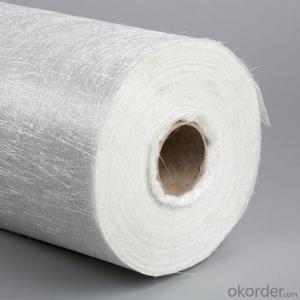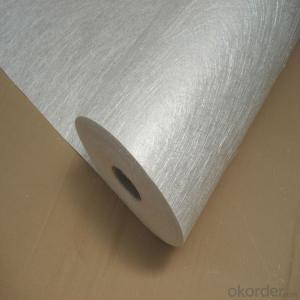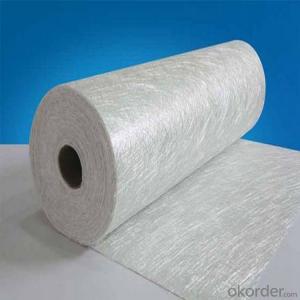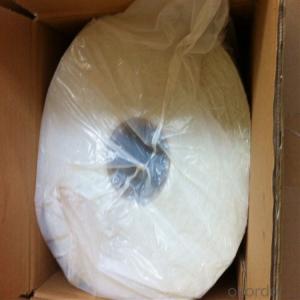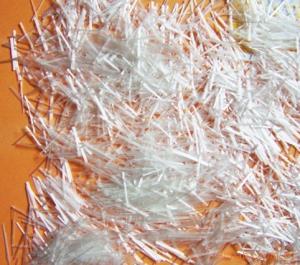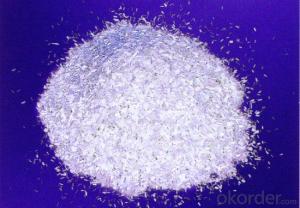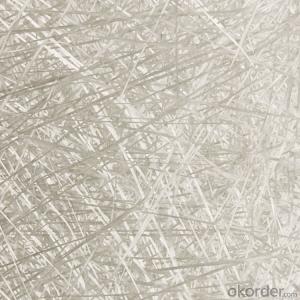Fiberglass Chopped Strand Mat Machine for 2024 1040mm Chopped Strand Mat
- Loading Port:
- Tianjin
- Payment Terms:
- TT OR LC
- Min Order Qty:
- 100 m.t.
- Supply Capability:
- 20000 m.t./month
OKorder Service Pledge
Quality Product, Order Online Tracking, Timely Delivery
OKorder Financial Service
Credit Rating, Credit Services, Credit Purchasing
You Might Also Like
Quick Details
| Technique: | Chopped Strand Fiberglass Mat (CSM) | Dimensions: | 450gsm | Mat Type: | Continuous Filament Mat |
| Fiberglass Type: | E-Glass | Softness: | softness | Place of Origin: | Jiangxi, China (Mainland) |
| Brand Name: | cnbm | Model Number: | 450gsm | color: | white |
| fiberglass type: | E glass | product: | e-glass powder chopped stand mats | binder: | powder or emulsion |
| width: | 1040 or 1270mm, as your requirement | weight: | 30 or 45kg/roll | paper tube diameter: | 90mm |
| outer diameter of roll: | 256mm | packing: | plastic film+carton box + pallet |
Packaging & Delivery
| Packaging Details: | plastic film+carton box + pallet |
| Delivery Detail: | 15-20days |
Specifications
1.e-glass powder chopped stand mats
2.binder:power or emulsion
3.width:1040mm or 1270mm
4.weight:450gsm
Picture
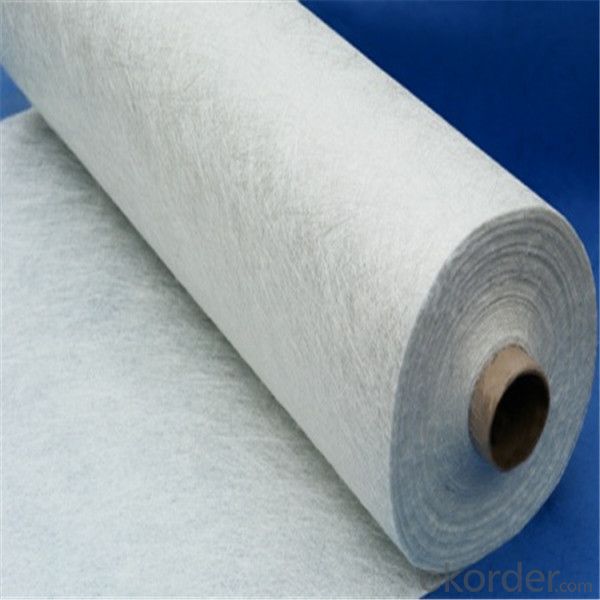
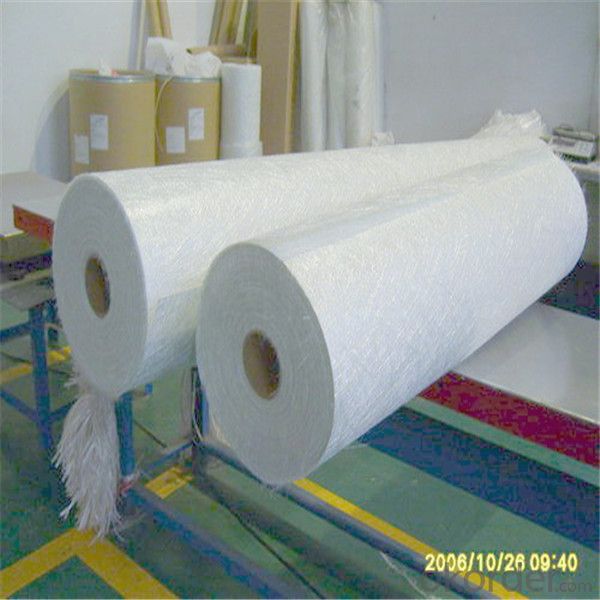
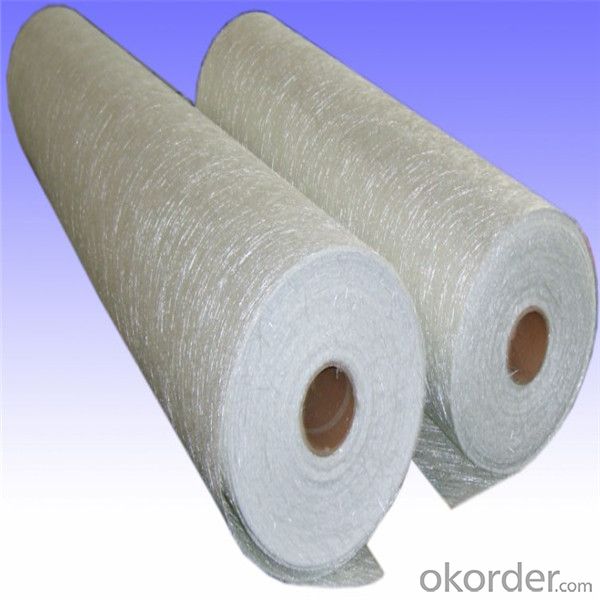
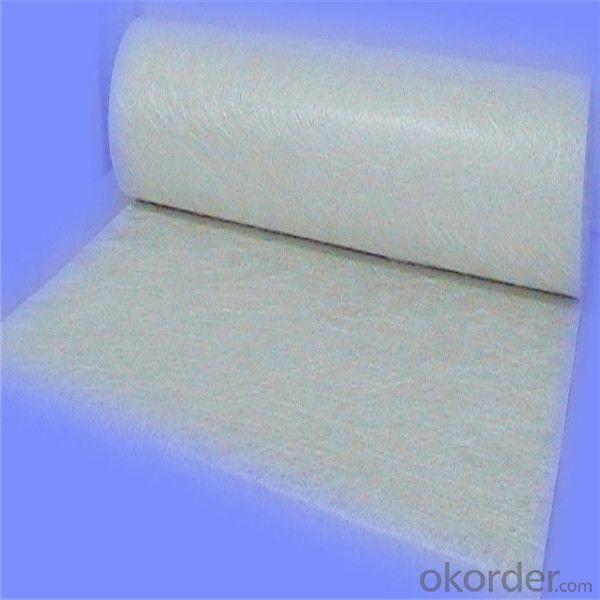
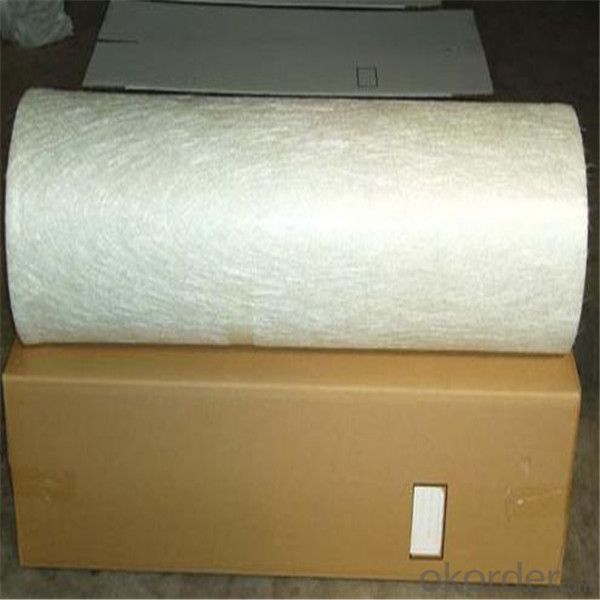
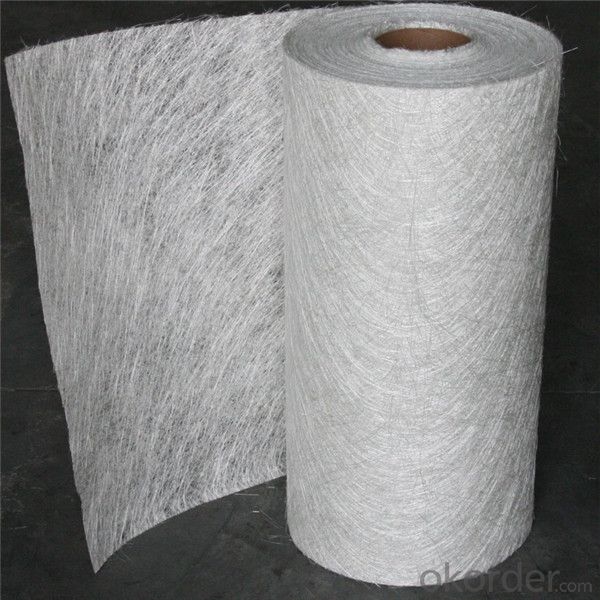
- Q: What are the typical compression properties of fiberglass chopped strand composites?
- The typical compression properties of fiberglass chopped strand composites can vary depending on factors such as the type and orientation of the fibers, resin matrix, and manufacturing process. However, generally speaking, fiberglass chopped strand composites exhibit good compression strength and stiffness. The compressive strength of fiberglass chopped strand composites is typically high, making them suitable for structural applications where load-bearing capabilities are required. The strength can vary based on the specific composition, but it is often comparable or even superior to other commonly used composites, such as carbon fiber composites. In terms of stiffness, fiberglass chopped strand composites also perform well. The fibers provide reinforcement, increasing the overall stiffness of the composite material. This stiffness is particularly advantageous in applications where rigidity and dimensional stability are essential. It is worth noting that the compression properties of fiberglass chopped strand composites can be tailored to meet specific requirements by adjusting factors such as fiber content, fiber orientation, and resin selection. By varying these parameters, manufacturers can optimize the compression performance of the composites for different applications. Overall, fiberglass chopped strand composites are known for their strong compression properties, combining high strength and stiffness. These properties make them suitable for a wide range of applications, including automotive components, aerospace structures, sporting goods, and construction materials.
- Q: How does the fiber orientation of fiberglass chopped strand affect the mechanical properties of composites?
- The mechanical properties of composites are greatly influenced by the fiber orientation of fiberglass chopped strand. Fiberglass chopped strand is made up of short individual fibers that are randomly oriented in various directions. When these chopped strands are added to a composite material, the fiber orientation becomes a crucial factor in determining the overall strength, stiffness, and other mechanical properties of the resulting composite. In general, a well-aligned fiber orientation within the composite can result in improved mechanical properties. When the fibers are aligned in the same direction as the applied load or stress, they can effectively transfer the load and resist deformation, thereby increasing the strength and stiffness of the composite. This alignment also enhances the load-bearing capacity of the composite material. Conversely, a random or less aligned fiber orientation can lead to decreased mechanical properties. Randomly oriented fibers may not distribute the applied load effectively, causing stress concentrations and potential failure points within the composite. This can result in reduced strength, stiffness, and overall performance. Additionally, the fiber orientation can also impact other mechanical properties such as impact resistance, fatigue resistance, and dimensional stability. Proper fiber alignment can enhance these properties, making the composite material more resistant to impacts, cyclic loading, and dimensional changes. In conclusion, the fiber orientation of fiberglass chopped strand has a significant impact on the mechanical properties of composites. A well-aligned fiber orientation can enhance strength, stiffness, impact resistance, fatigue resistance, and dimensional stability. Conversely, a random or less aligned fiber orientation can lead to reduced performance in these aspects. Therefore, careful consideration of fiber orientation is crucial in the design and manufacture of composites with desired mechanical properties.
- Q: Can fiberglass chopped strand be used in water treatment applications?
- Indeed, water treatment applications can make use of fiberglass chopped strand. With its exceptional resistance to corrosion and chemicals, fiberglass proves to be a versatile material perfectly suited for water treatment procedures. Employing chopped strands of fiberglass allows for the reinforcement of multiple components, including pipes, tanks, and filters, which are essential in water treatment systems. The remarkable strength and durability of fiberglass render it highly capable of enduring the challenging conditions commonly encountered in water treatment facilities. Furthermore, fiberglass is non-toxic and does not release any detrimental substances into the water, guaranteeing the safety of the treated water supply.
- Q: Is fiberglass chopped strand suitable for wind turbine blades?
- Indeed, wind turbine blades can indeed be made of fiberglass chopped strand. This material is highly favored in the production of wind turbine blades due to its remarkable properties such as lightweight, exceptional strength, and durability. Chopped strand fiberglass, which comprises of randomly oriented small fibers held together by a binder, allows for effortless molding and manufacturing into intricate shapes, making it an excellent choice for the production of wind turbine blades. The fibers provide remarkable stiffness and strength, enabling the blades to efficiently harness wind energy and endure the strains and pressures encountered during operation. Furthermore, fiberglass possesses corrosion-resistant qualities, reducing the need for maintenance and extending the lifespan of the blades. All in all, fiberglass chopped strand is a fitting and extensively utilized material in the fabrication of wind turbine blades.
- Q: Can fiberglass chopped strand be used in composite materials?
- Fiberglass chopped strand finds application in composite materials, offering reinforcement and durability. Comprising of small, randomly chopped glass fibers, it is commonly blended with resin to create composites. In numerous industries such as automotive, aerospace, construction, and marine, the use of fiberglass chopped strand is prevalent. Its efficacy and cost-effectiveness make it an ideal choice for enhancing the strength and stiffness of composites, rendering them suitable for diverse applications.
- Q: Is fiberglass chopped strand fire-resistant?
- Fiberglass chopped strand is indeed fire-resistant. It is derived from spun glass fibers, which possess a naturally high melting point and are not easily prone to catching fire. Furthermore, during the manufacturing process, fire retardant materials are often added to fiberglass to enhance its fire-resistant qualities. As a result, fiberglass chopped strand is widely favored for applications that prioritize fire safety, including insulation, construction materials, and automotive components. However, it is crucial to recognize that the fire resistance of fiberglass chopped strand may differ depending on the specific product and manufacturing technique employed. Therefore, it is always prudent to consult the manufacturer's specifications for precise information regarding its fire-resistant attributes.
- Q: How does the electrical conductivity of fiberglass chopped strand affect its performance?
- The electrical conductivity of fiberglass chopped strand plays a crucial role in determining its overall performance. Fiberglass is known for its excellent insulating properties, which make it highly resistant to electrical current. However, when fiberglass chopped strand is mixed with other materials, such as resins, polymers, or metals, it can significantly alter its electrical conductivity and subsequently affect its performance in various applications. In applications where electrical conductivity is desired, such as in the production of electronic components or conductive composites, the addition of conductive additives to fiberglass chopped strand can enhance its electrical conductivity. This modification allows for the efficient transfer of electrical current throughout the material, making it suitable for applications that require the conduction of electricity. On the other hand, in applications where electrical insulation is necessary, the inherent electrical insulating properties of fiberglass chopped strand are highly advantageous. The low electrical conductivity of fiberglass ensures that it acts as an effective barrier against the flow of electrical current. This property makes fiberglass chopped strand ideal for use in insulation materials, electrical enclosures, or any application where electrical safety is paramount. Moreover, the electrical conductivity of fiberglass chopped strand can also impact its performance in terms of mechanical strength and durability. In some cases, the addition of conductive materials can affect the bonding and adhesion of the chopped strand to other materials, potentially compromising its overall strength and structural integrity. Conversely, the high electrical insulation properties of fiberglass can contribute to its mechanical strength by preventing the degradation of the material due to electrical factors like corrosion or electrical discharge. In summary, the electrical conductivity of fiberglass chopped strand greatly influences its performance in various applications. Whether it requires high electrical conductivity for efficient conduction or low electrical conductivity for effective insulation, understanding and manipulating the electrical properties of fiberglass chopped strand is essential in optimizing its performance in specific applications.
- Q: Can fiberglass chopped strand be used in 3D printing?
- Yes, fiberglass chopped strand can be used in 3D printing. Fiberglass chopped strand is a form of reinforcement material that consists of small strands of glass fibers. It can be mixed with various types of resins, such as epoxy or polyester, to create a composite material that is used in 3D printing processes. When mixed with resin, fiberglass chopped strand adds strength and stiffness to the printed object. This makes it suitable for applications where structural integrity is important, such as automotive parts, aerospace components, or functional prototypes. However, it is important to note that not all 3D printers are capable of handling fiberglass chopped strand. Specialized printers or modifications may be required to accommodate the added reinforcement material. Additionally, the printing process may need to be adjusted to ensure proper adhesion between the fibers and the resin. Overall, while fiberglass chopped strand can be used in 3D printing, it requires careful consideration of the printer's capabilities and adjustments to the printing process to achieve desired results.
- Q: How is the interlaminar shear strength of fiberglass chopped strand composites determined?
- The interlaminar shear strength of fiberglass chopped strand composites is typically determined through various testing methods, such as the short beam shear test or the double cantilever beam test. These tests involve applying a shear force to the composite material and measuring the maximum load it can withstand before failure. This provides valuable information on the composite's resistance to interlayer shear stresses and helps in evaluating its overall mechanical properties.
- Q: Can fiberglass chopped strand be used in water treatment applications?
- Yes, fiberglass chopped strand can be used in water treatment applications. It is commonly used in the construction of water treatment tanks, pipes, and vessels due to its corrosion resistance, high strength, and durability. Additionally, fiberglass chopped strand can be used in the fabrication of filtration media, such as filter beds and packed towers, to remove impurities from water.
Send your message to us
Fiberglass Chopped Strand Mat Machine for 2024 1040mm Chopped Strand Mat
- Loading Port:
- Tianjin
- Payment Terms:
- TT OR LC
- Min Order Qty:
- 100 m.t.
- Supply Capability:
- 20000 m.t./month
OKorder Service Pledge
Quality Product, Order Online Tracking, Timely Delivery
OKorder Financial Service
Credit Rating, Credit Services, Credit Purchasing
Similar products
Hot products
Hot Searches
Related keywords
